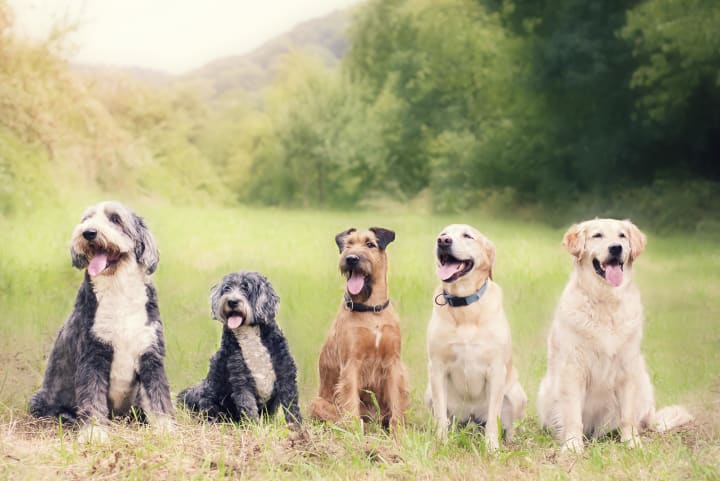Large Dog Training Tips
Want to have an Akita or a Samoyed, but don't want to be taken for a morning drag? Newbies to big dogs might want to check out these large dog training tips.

When you have a large dog, training can make all the difference between having a wonderful companion and having the pet from hell. Large dogs that are untrained can pose a serious safety threat to other pets, small children, or even their owners. They also tend to be much more destructive than a small dog that isn't very trained.
If you want to have a larger dog, it's vital that you train them well. Newbies who are working on training their giant pups might want to look at these large dog training tips — as suggested by the pros.
Asking a professional for training is often the best option for new dog owners who don't know what to do.

Large dogs are often a lot more difficult to train than smaller dogs, and if you're new to dog ownership, you may need professional help. After all, it's not easy to deal with a new dog and learn how to train them at the same time.
There's absolutely nothing wrong with having a professional dog trainer be the one who teaches Fido to sit, stay, and heel. There's also nothing wrong with asking a local trainer for large dog training tips if you can't actually afford their help.
Start them young, and make sure they know who's boss.

The younger your dog gets trained, the better behaved they will be. Smaller puppies are easier to manage, and way easier to crate than their larger counterparts.
For example, trying to train a fully grown Mastiff will be way harder, primarily because they've lived their lives without much structure or rules to tell them that jumping or biting isn't good.
One of the best large dog training tips we've heard is to use a commanding presence and authoritarian voice to teach your dog who's boss. Dogs react very well to leadership and tend to fall in line fairly quickly once they realize they're getting a stern warning.
Focus on reward, as large dogs may actually fight back when punished.

Much of dog training is learning how to reward good behavior. When dogs learn that they will get treats for performing tricks, or learn that they'll get praise for going to the bathroom outside, they will be more likely to act nicely.
Toys also work well for this tip. If dogs notice that they get a lot more freedom and praise for chewing on a large dog toy than the couch, they will be less likely to chew on the couch.
Many trainers say that one of the most important large dog training tips out there involves learning how to punish properly. Hitting or kicking a large dog could result in them biting you or worse. So, if you have to punish them, crate them.
Don't tolerate behavior from a puppy that you wouldn't want an adult dog to do.

The biggest problem with large dog breeds is that they grow in size and strength. That cute little Samoyed puppy looks adorable when he's jumping on you now, but when he's 130 pounds, it's not going to be cute. Rather, it'll be painful.
If you don't want your dog to jump on people when they're 200 pounds or so, you need to train them to sit when they are puppies. Similarly, weaning them off of the need to drag you on a leash while they're small is a wise choice to make.
Remember, dogs also tend to react well to socialization.

There's a reason why so many movies show large, angry dogs that are chained up in the backyard. Dogs that aren't around humans tend to be a lot more feral in nature.
That's why one of the best large dog training tips you can get is to spend time with your dog. A dog that's alone is a dog that will want to revert to its wolfy roots.
Lastly, consistency is key.

Large dog training tips often focus on the specific needs of a large dog, but the truth is that this is a tip that works well with small and large dogs alike.
You need to be consistent when you train dogs. It may seem like you're being a "good dog mom" when you decide to let Fido eat off the table "just once," but that's actually not the case. Rather, it sends mixed signals to the dog and teaches them that the rules aren't always in place.
If you want a well-behaved dog, train them consistently. It's just that simple.
About the Creator
Lindsie Polhemus
Lover of dogs, wine, and buffalo chicken. Laughing through this thing called life.






Comments
There are no comments for this story
Be the first to respond and start the conversation.